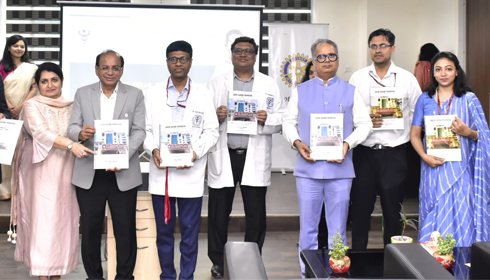
AIIMS-Delhi sets up its skin bank
The Department of Plastic and Burn Surgery of Delhi-AIIMS has to set up a skin bank to provide services to patients who need skin grafting to save their lives.
This is the second skin bank opened within a week in the national capital. Earlier, the first skin bank in the city was set up at Safdarjung Hospital. The Rotary Club of Delhi-West donated the equipment for the skin bank.
“This will give a new lease of life to burn patients. A skin bank manual was also released on this occasion,” the AIIMS said.
“Skin can be stored till five years after harvesting. The skin will be taken from the dead body after post-mortem. Skin is not taken from the body of HIV, cancer and hepatitis deceased," Prof Maneesh Singhal, HoD, Burn and Plastic Surgery Block, Delhi-AIIMS, said.
"Two lives can be saved from the skin of one dead body. Our first choice is to take skin from the thigh. The best thing about skin donation is that there is no HLA matching,” Prof Singhal added.
Equipped with all modern facilities to process cadaveric skin, such as a walk-in refrigerator, dermatomes, incubator, shaker and biosafety cabinet with laminar flow, the newly established skin bank is likely to save hundreds of lives each year.
The doctors at AIIMS said that up to 3000 sq cm of skin can be harvested from an average-built person's body. So, a 30% TBSA raw area will require around 1000 to 1500 sq cm of graft. Thus, a donation from one patient can save the life of at least one burn victim and more than one pediatric burn victim.
Any person above 18 years can donate their skin within 6 hours of death. Only those suffering from HIV & Hepatitis B & C, STDs, generalised infection and septicemia, skin infection, malignancy, and having evidence of skin cancer cannot donate their skin.
The skin is extracted from the back, thighs, and legs of the deceased.
Doctors said that while harvesting skin, no bleeding occurs, and the portions are treated and covered with respect before the body is handed over to family members.